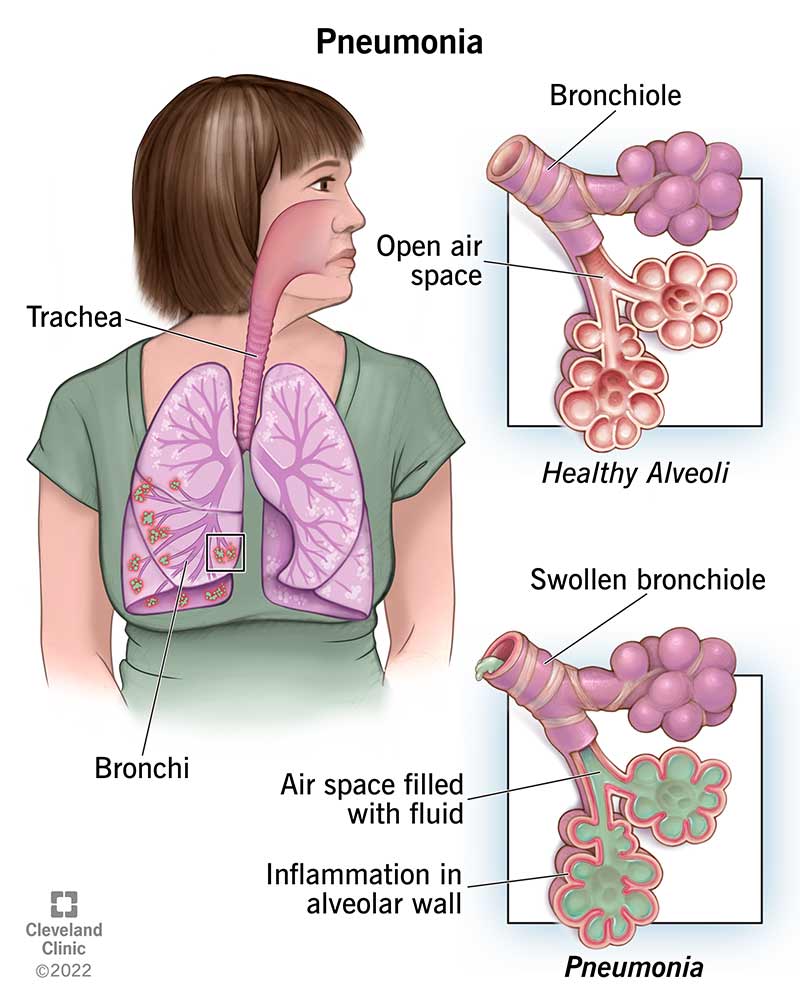
By Adaobi Rhema Oguejiofor
Pneumonia is a respiratory disease that claims approximately 2.5 million lives worldwide annually, according to Clinic Barcelona. In 2017, the World Health Organization (WHO) reported that pneumonia accounted for 15% of all deaths in children under the age of 5, killing over 808,000 children. In 2019, WHO recorded about 740,180 deaths attributed to pneumonia. Pneumonia is an acute respiratory infection caused by viruses, fungi, or bacteria, affecting people of all ages. However, it is the leading infectious cause of death in children worldwide. The disease causes lung tissue to swell or become inflamed, filling the air sacs with fluid or pus, making breathing painful and limiting oxygen intake.
There are three types of pneumonia: viral, bacterial, and fungal. Viral pneumonia is often not as severe as bacterial pneumonia but can increase the risk of contracting bacterial pneumonia. Bacterial pneumonia is the most common type and can be caused by several types of bacteria. Fungal pneumonia is more likely to affect people with weaker immune systems. Pneumonia can be classified based on where or how it was acquired, including hospital-acquired pneumonia, community-acquired pneumonia, ventilator-associated pneumonia, and aspiration pneumonia. It can also be classified according to the area of the lungs affected, including bronchopneumonia and lobar pneumonia.
Symptoms of pneumonia range from mild to life-threatening and include coughing, fever, sweating or chills, shortness of breath, chest pain, and fatigue. Older adults may experience milder symptoms, while infants may appear to have no symptoms.
Pneumonia occurs when germs enter the lungs and cause an infection, leading to inflammation and fluid build-up in the air sacs. Different types of infectious agents, including bacteria, viruses, and fungi, can cause pneumonia.
Risk factors for pneumonia include age, weakened immune systems, chronic medical conditions, and exposure to lung irritants. Treatment depends on the type of pneumonia, severity, and general health condition. Antibiotics can treat bacterial pneumonia, while antiviral medications may be prescribed for viral pneumonia. Antifungal medications are used to treat fungal pneumonia.
Home remedies can help ease symptoms, but it is essential to stick to the treatment plan and take prescribed medications as directed. Hospitalization may be necessary for severe cases or those with other health problems.
Complications of pneumonia can include worsened chronic conditions, bacteraemia, lung abscesses, impaired breathing, acute respiratory distress syndrome, pleural effusion, kidney, heart, and liver damage, and death.
Prevention is key, and vaccination is the first line of defence against pneumonia. The Prevnar 13 and Pneumovax 23 vaccines can help prevent pneumonia and meningitis caused by pneumococcal bacteria. Other prevention tips include quitting smoking, washing hands regularly, covering coughs and sneezes, and maintaining a healthy lifestyle.
With proper recognition and treatment, many cases of pneumonia can be cleared without complications. Recovery time and process depend on the type of pneumonia, severity, and general health. Early detection and strict adherence to treatment plans are essential for a successful recovery. Awareness and preventive measures can significantly reduce the risk of contracting pneumonia. By understanding the disease and taking steps to strengthen the immune system, individuals can breathe easily again and enjoy good health.


